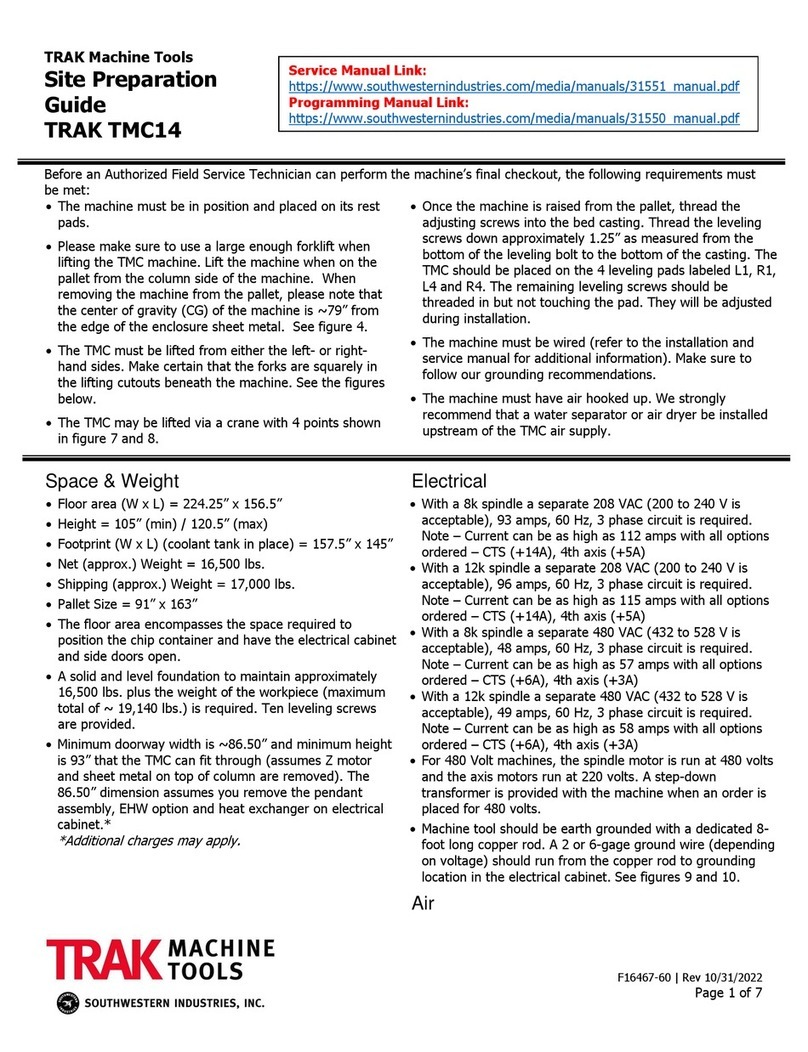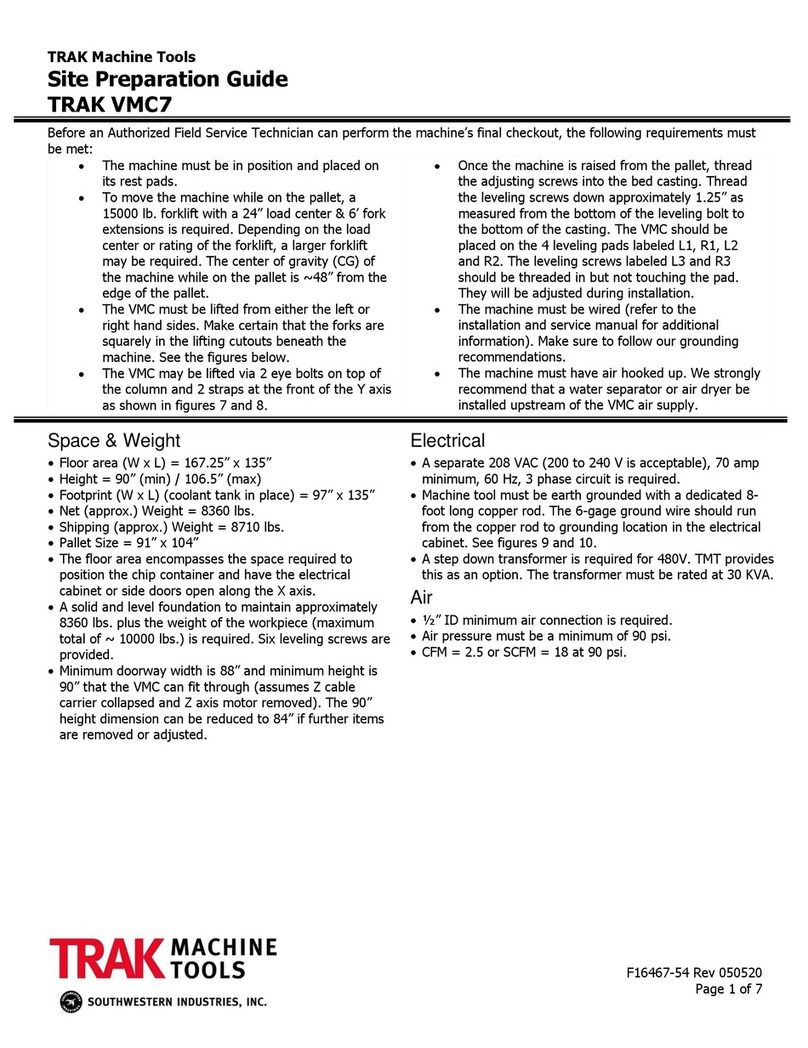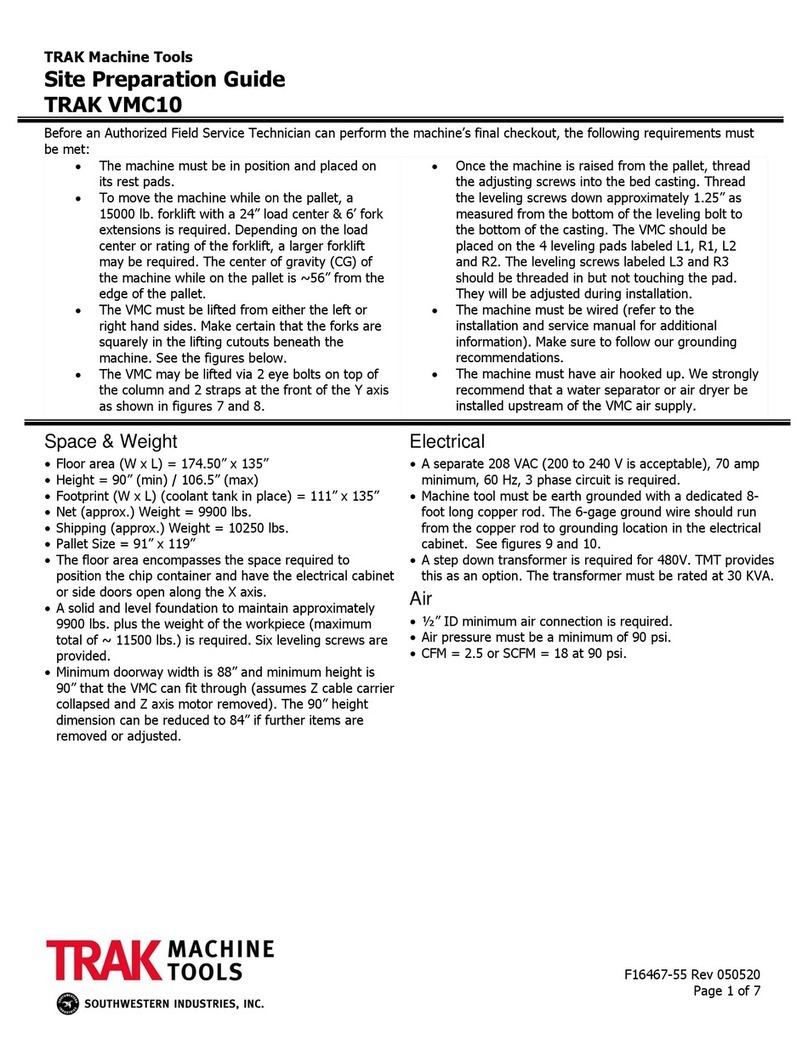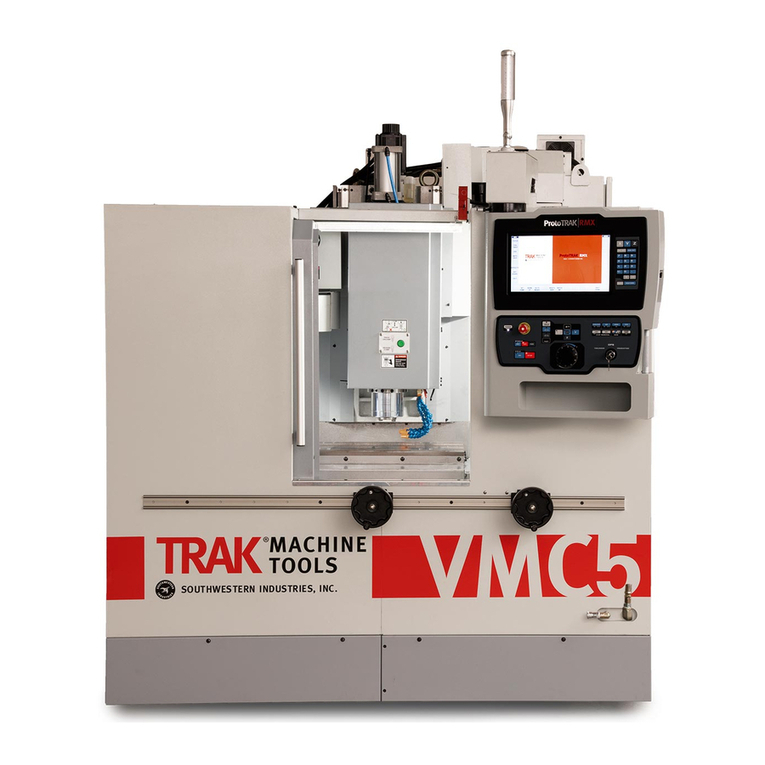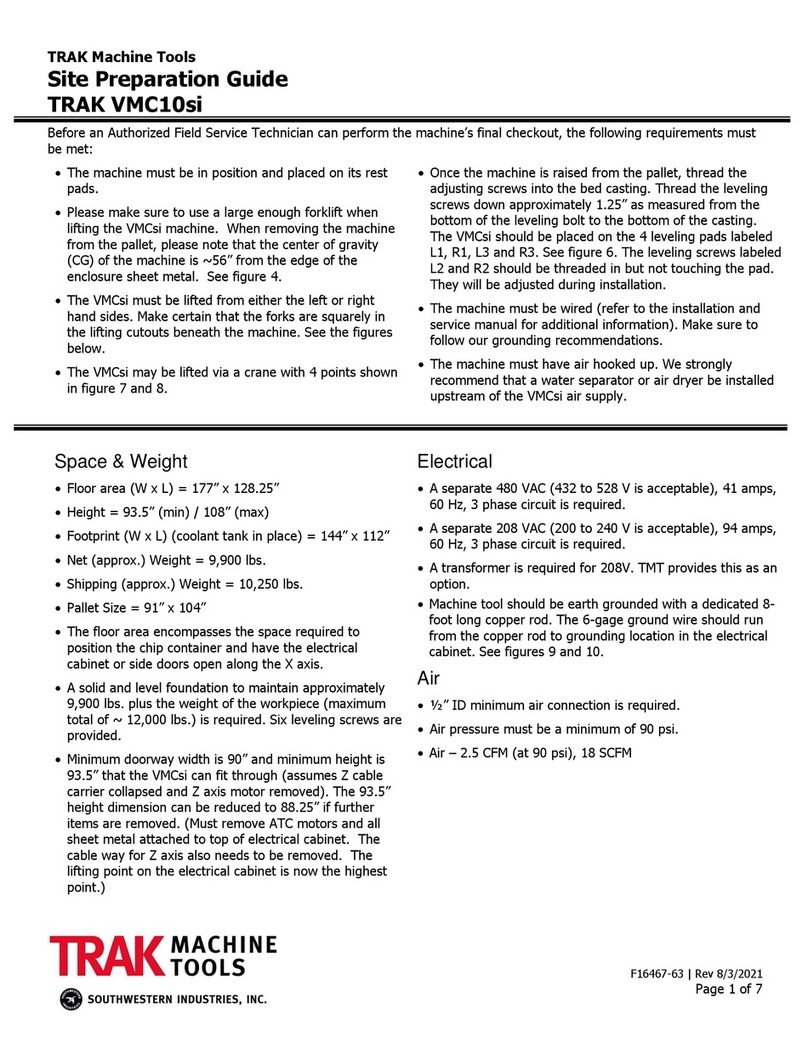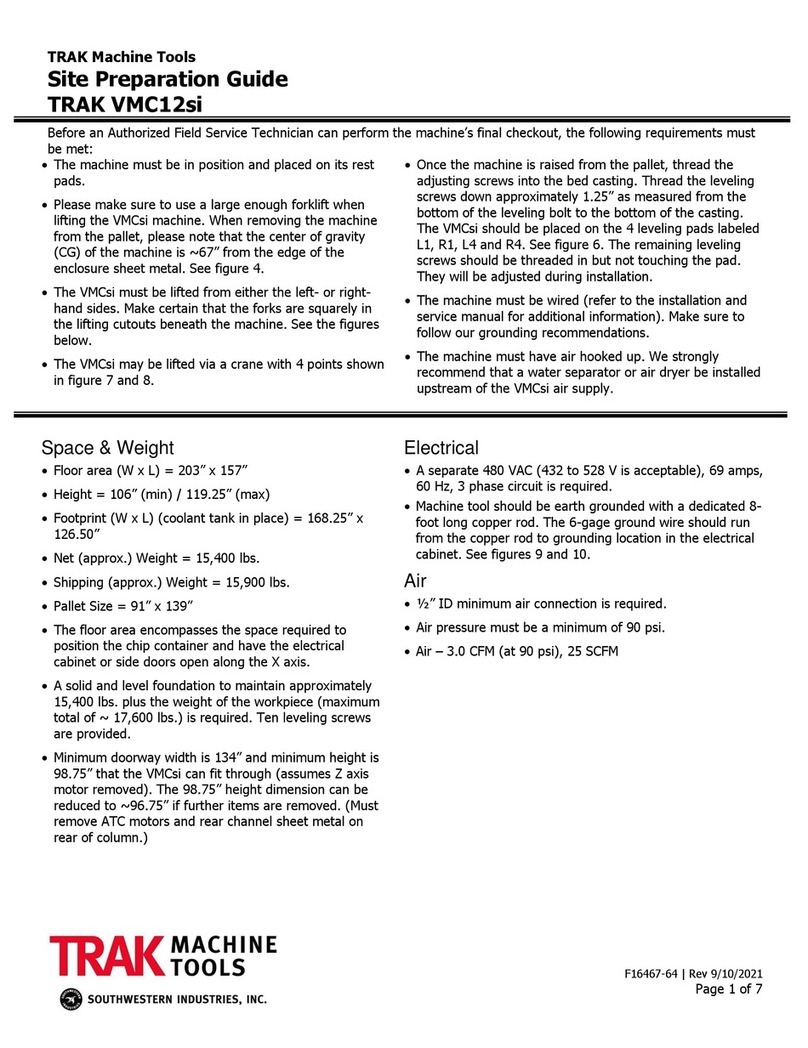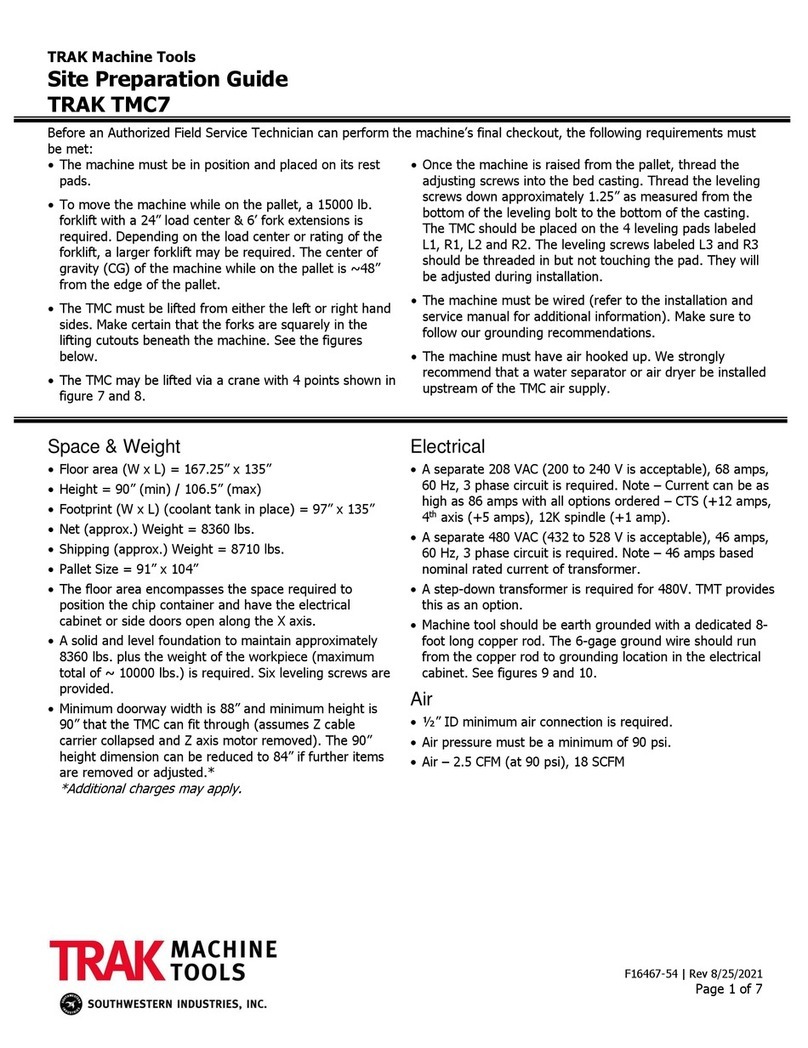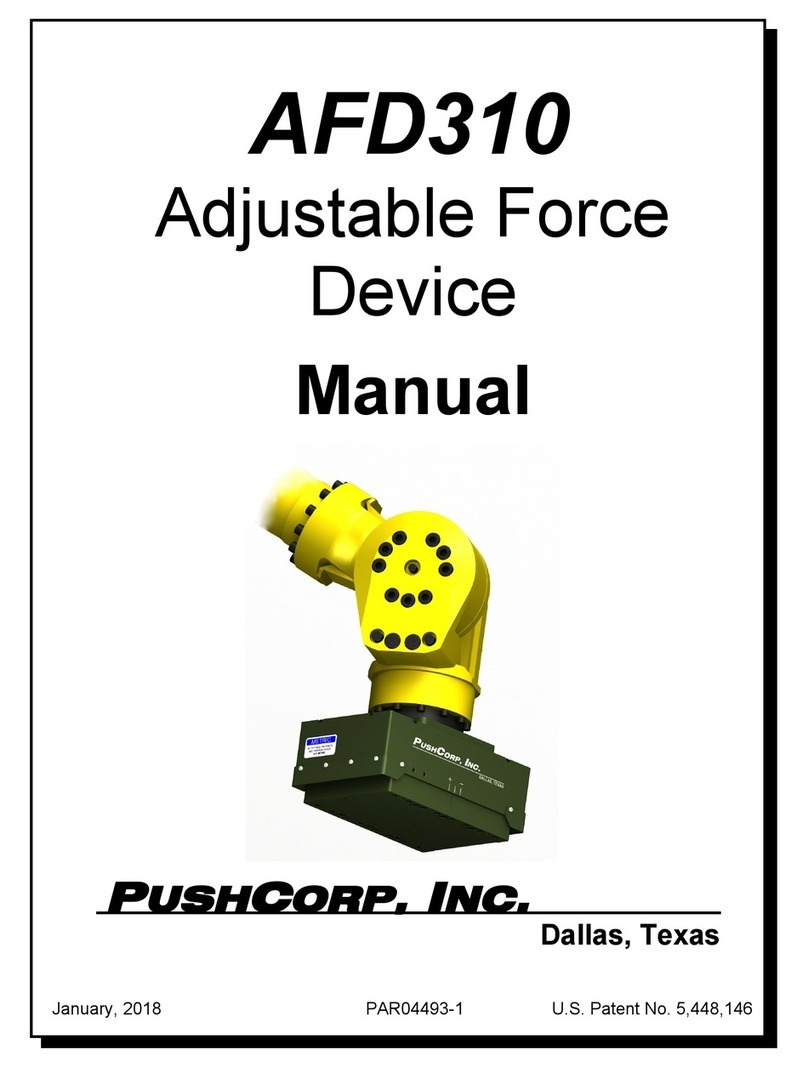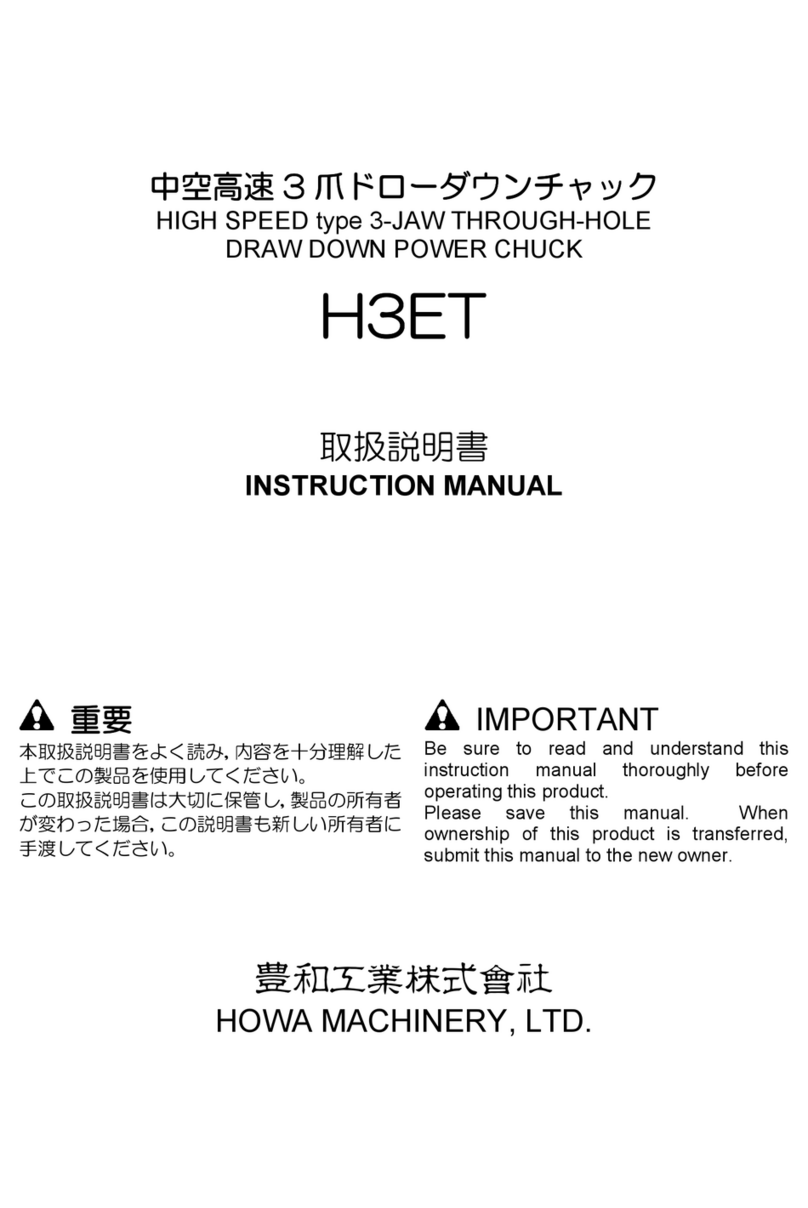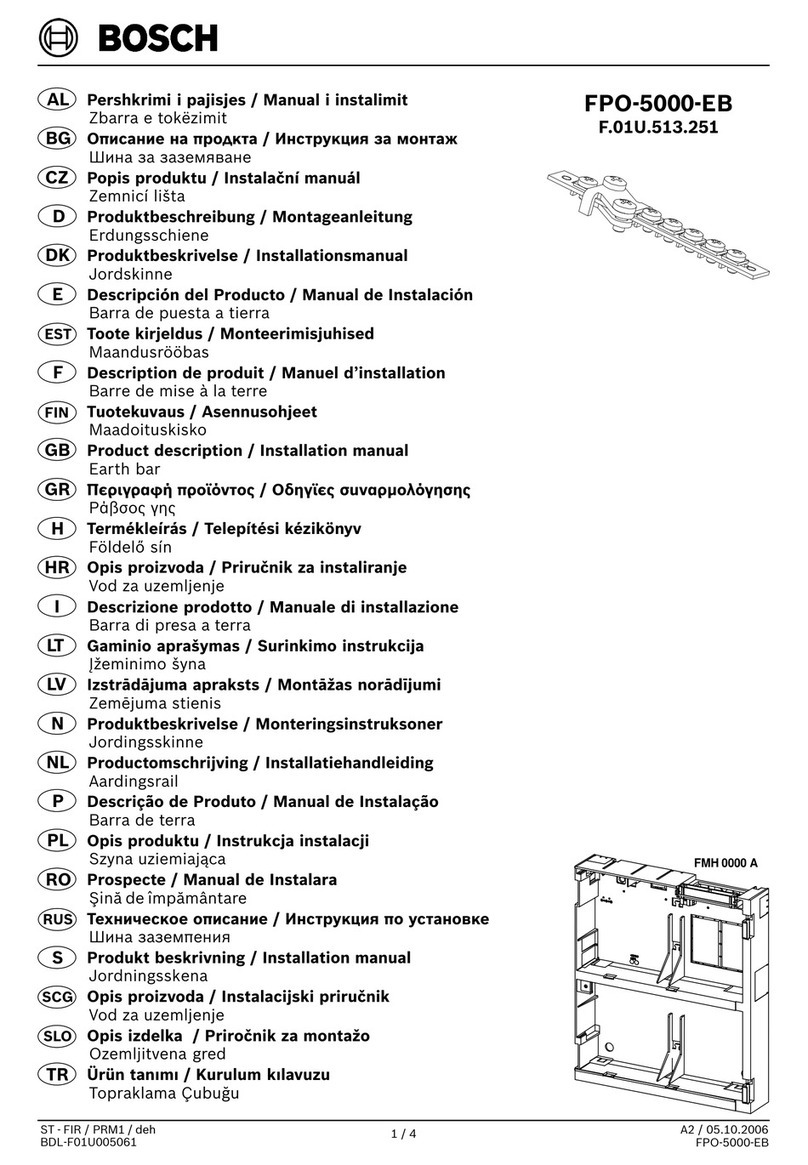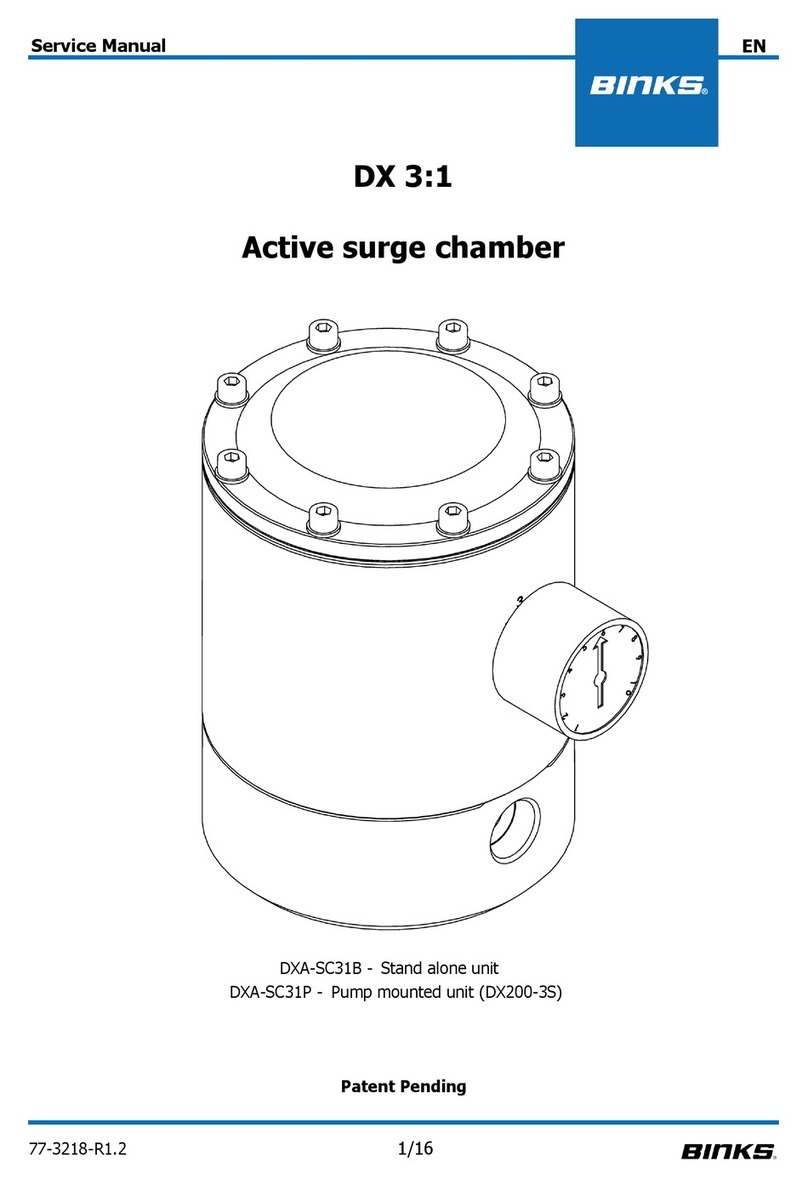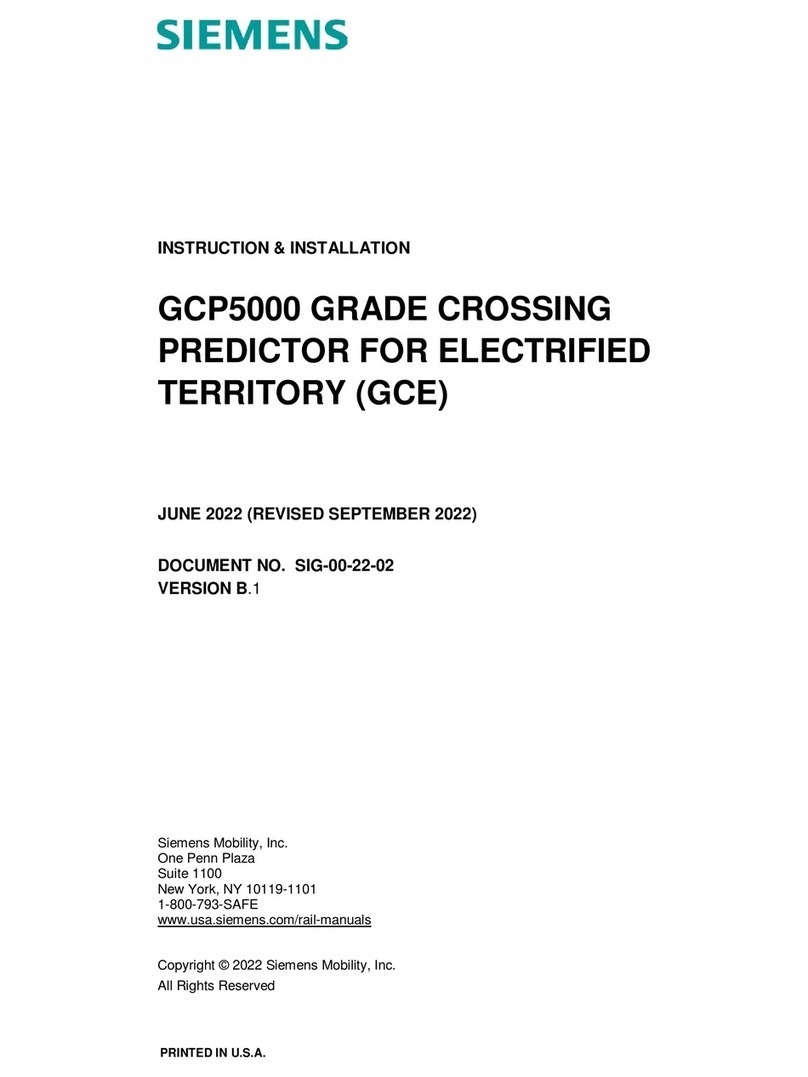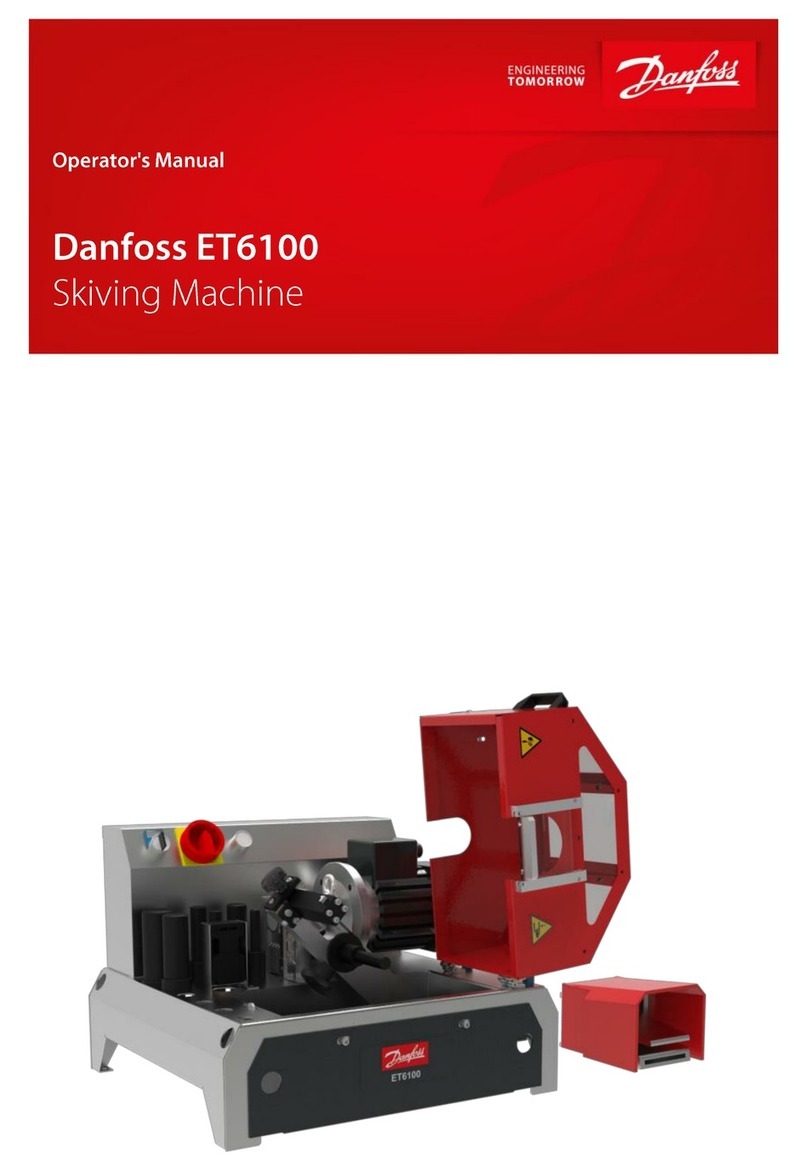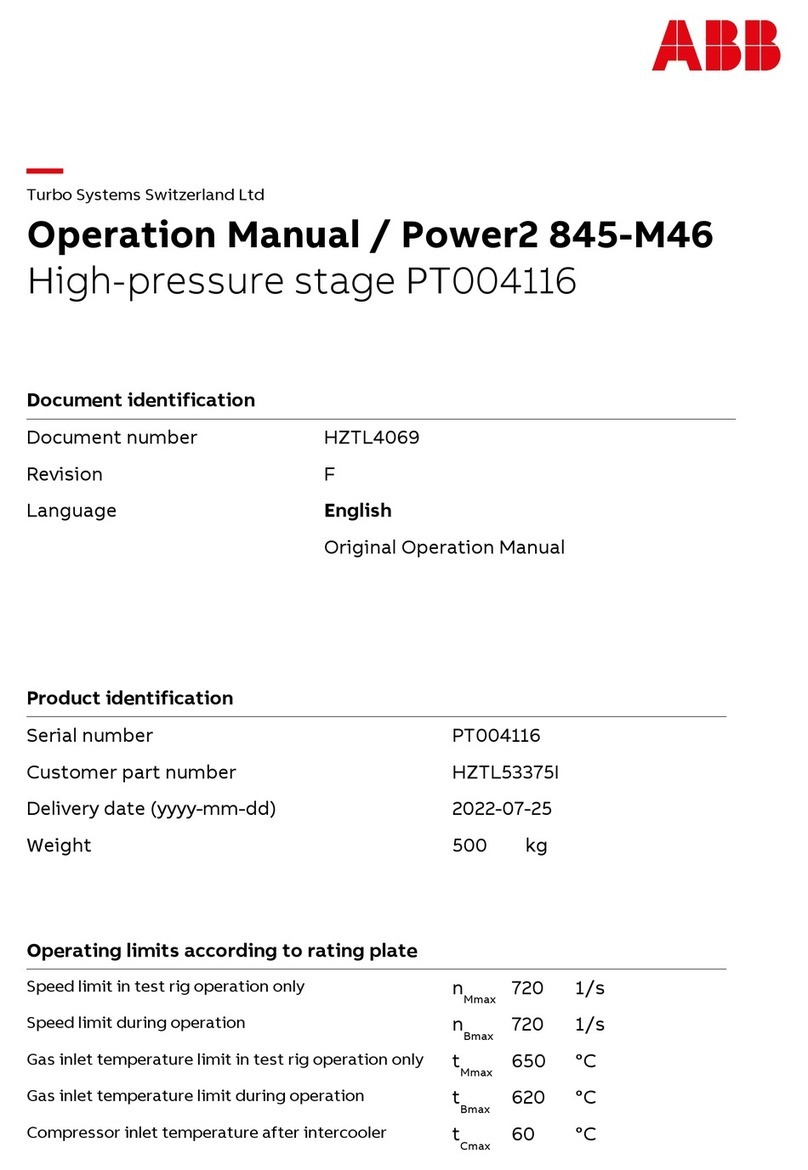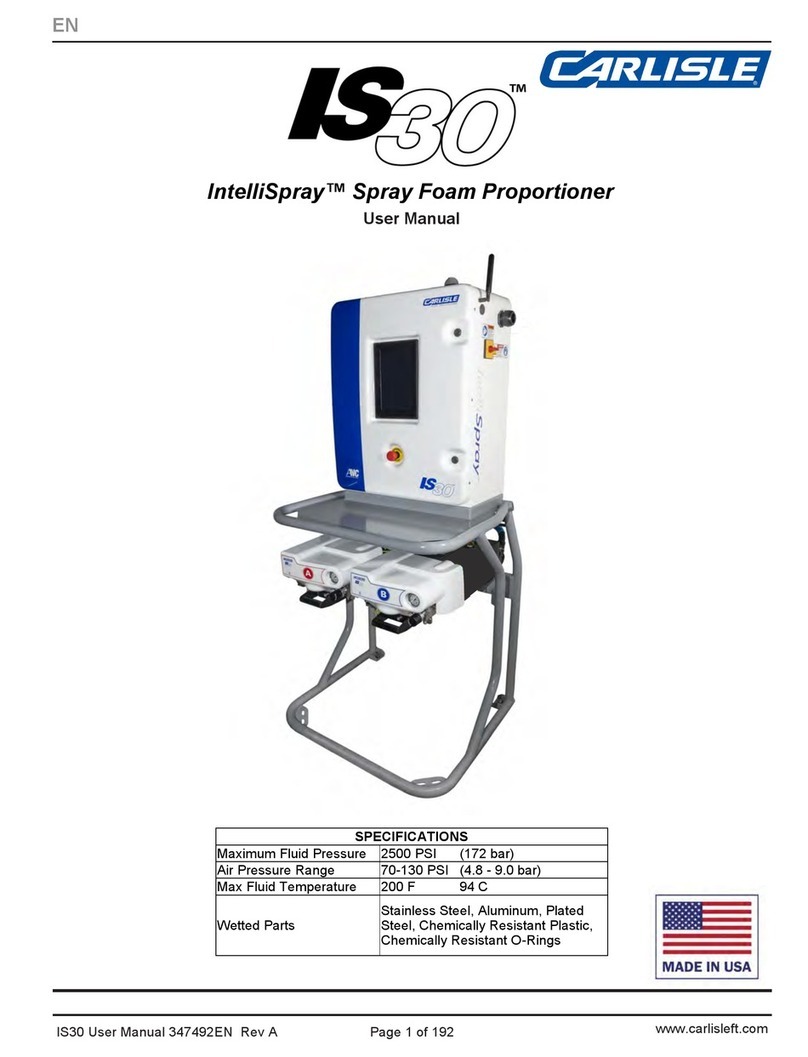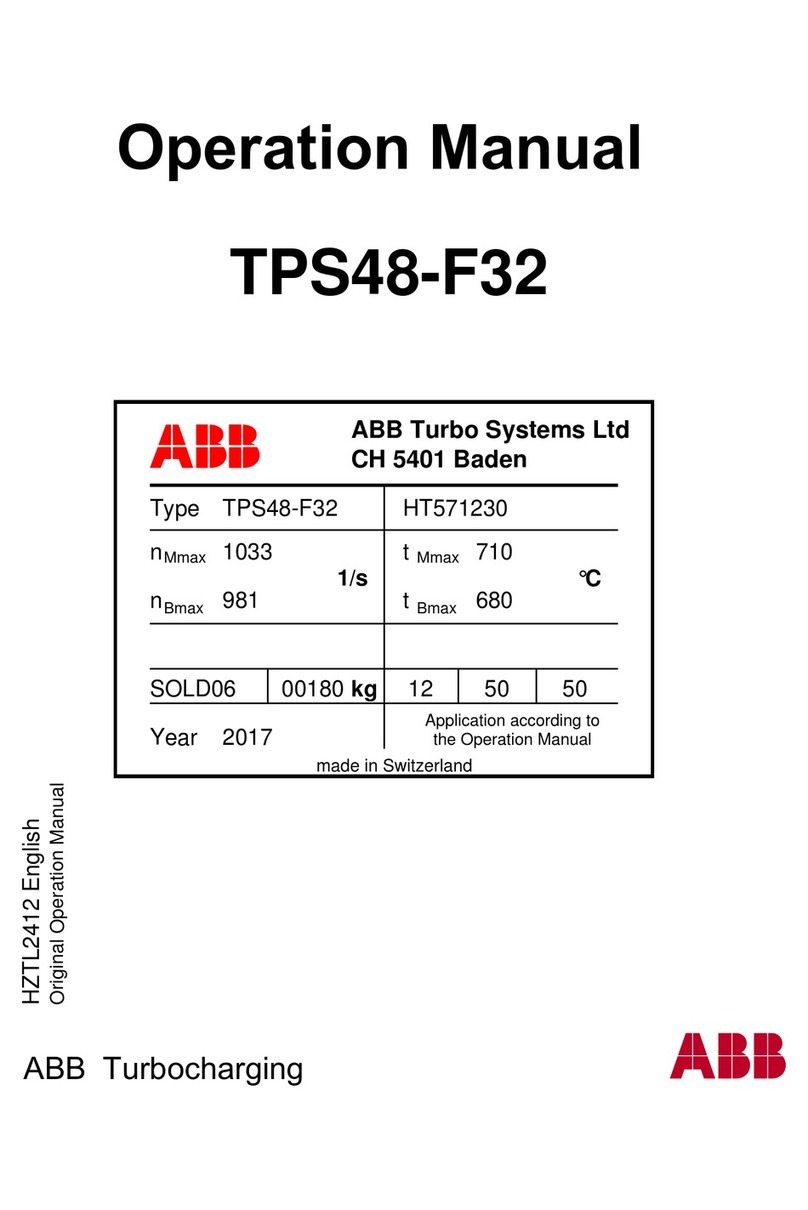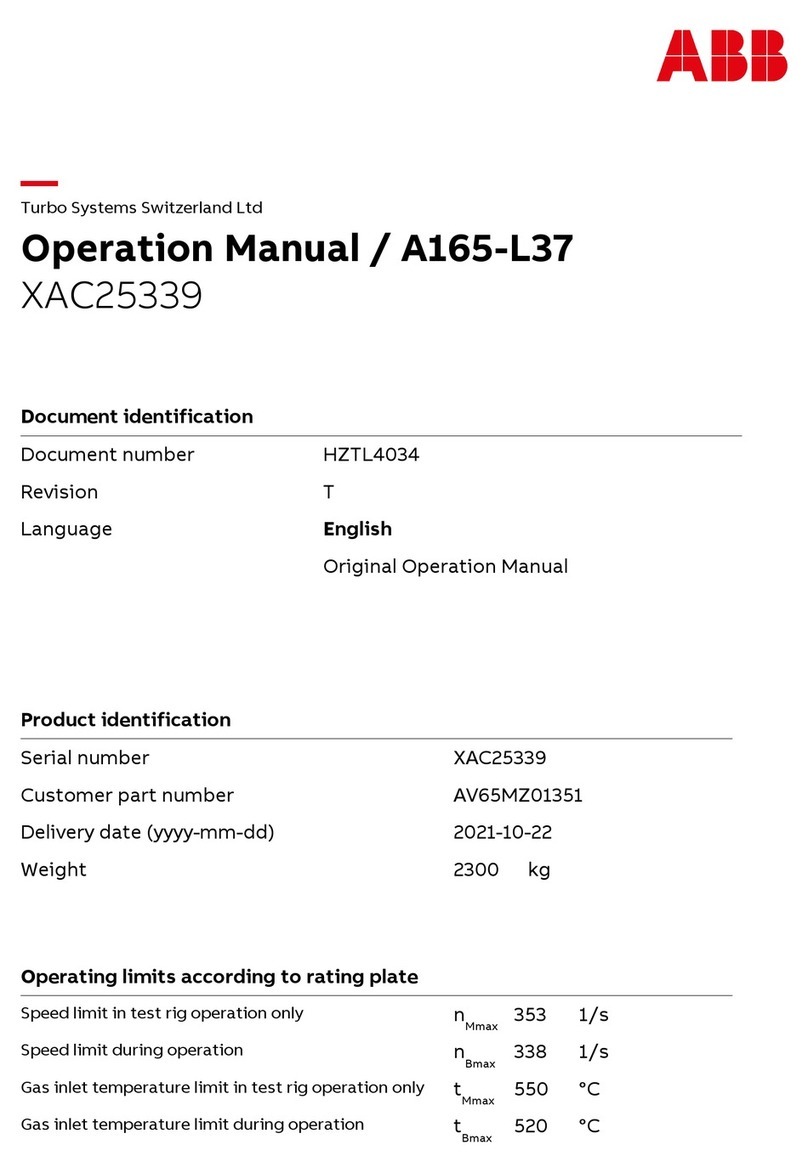TRAK SAND TRAK ST1-075A la Owner's manual



T of C 1
Table of Contents
Introduction
The Manual ................................................................................................................................................. 2
Replacement Parts...................................................................................................................................... 2
Reports ........................................................................................................................................................ 2
Disclaimer ................................................................................................................................................... 2
Safety Practices
Signal Words ............................................................................................................................................... 3
New or Additional Operators ....................................................................................................................... 3
Personal Considerations ............................................................................................................................. 4
Operational Considerations ......................................................................................................................... 5
Equipment Considerations .......................................................................................................................... 6
Application
Application................................................................................................................................................... 6
Installation & Removal
Hydraulic Installation ................................................................................................................................... 7
Installation of Sandbagger .......................................................................................................................... 8
Installation of Safety Stand ......................................................................................................................... 9
Removal of Sandbagger ............................................................................................................................. 9
Starting And Operating
Walk Around Inspection .............................................................................................................................. 10
Controls ....................................................................................................................................................... 10
Filling Sandbags.......................................................................................................................................... 11
Stalled Condition ......................................................................................................................................... 11
Variations In Sand ....................................................................................................................................... 11
Cleaning ...................................................................................................................................................... 12
Shut Down ................................................................................................................................................... 12
General Maintenance
Safety Decal Locations ............................................................................................................................... 13
Routine Inspection....................................................................................................................................... 13
Lubrication................................................................................................................................................... 15
Disassembly procedures ............................................................................................................................. 15
Specifications
Specifications .............................................................................................................................................. 20
ST1-075A la 12/98 © Copyright - 1998 TRAK International, Inc.
Page

2ST1-075A Ia 12/98
IMPORTANT!
Before you operate this attachment, read this
manual completely and carefully so you will
understand the safety instructions and the
operation of the controls and safety equipment.
You must comply with all
DANGER, WARNING
and
CAUTION
notices. They are for your benefit.
All references to the right side, left side, front, or
rear are given from the operator’s seat of the host
vehicle looking in a forward direction.
TRAK International, Inc. is herein after referred to
as TRAK.
IMPORTANT!
A Warranty Registration Form must be filled out by
the TRAK distributor, signed by the purchaser, and
returned to TRAK once the product is sold and/or
put into service. This report activates the warranty
period, assuring that your claims during the
warranty period will be honoured and processed
expediently. To guarantee your full warranty
service, make sure your distributor has returned
the business reply card of this form to TRAK.
TRAK reserves the right to make changes on and
to add improvements upon it’s products at any time
without public notice or obligation. TRAK also
reserves the right to discontinue manufacturing
any product at its discretion at any time.
For your easy reference when ordering
replacement parts or making service inquiries on
this attachment, record its model and serial
numbers on the back cover of the manual. The
numbers are stamped on the serial number plate
located on the left side of the motor housing
(Figure 1).
IMPORTANT!
The replacement of any part on this product by
anything other than a TRAK
authorized replacement part may adversely affect
the performance, durability, or safety of this
product and
will void the warranty
.
TRAK assumes
no liability for unauthorized replacement parts
which adversely affect the performance, durability
or safety of this product.
fFigure 1
omOM0240
Disclaimer
Reports
The Manual
Replacement Parts
Introduction
Serial # Plate
This Owners/Operators manual provides the
information you need to correctly operate and
maintain this attachment.

3
ST1-075A Ia 12/98
The information in this manual does not replace
any safety rules and laws used in your area.
Before operating this product, learn the rules and
laws for your area. Make sure the product
complies with these rules and laws.
Your safety and the safety of others in the work
area depends significantly upon your knowledge
and understanding of all correct operating
practices and procedures for this product.
The signal word “Warning”means a hazard exists
on or near the product which can result in serious
injury or death if the proper precautions are not
taken.
The signal word “Caution”is a reminder of safety
practices or directs attention to unsafe practices on
or near the product which could result in personal
injury if the proper precautions are not taken.
This symbol means “Attention! Become Alert!
Your Safety Is Involved!” The symbol is used
with the following signal words to attract your
attention to safety messages found on the safety
decals and throughout this manual. The message
that follows the symbol contains important
information about Safety.
To avoid possible injury
or death, carefully read and follow the messages!
Be sure to fully understand the potential causes of
injury or death.
Signal Word:
Is a distinctive word on the safety decals and
throughout this manual that alerts the viewer to the
existence and relative degree of the hazard.
At the time of original purchase, the purchaser of
this attachment was instructed by the seller on its
safe and correct use. If this attachment is to be
used by an employee or is loaned or rented to
someone other than the purchaser, make certain
that the new operator reads and understands this
Operator’s Manual and the host vehicle’s
Operator’s Manual that are provided with the
equipment before operating the attachment.
In addition, make sure that the new operator has
completed a walk-around inspection of the
attachment and host vehicle, is familiar with all
decals and safety equipment for the attachment
and host vehicle, and has demonstrated the
correct use of all controls.
The signal word “Danger”means an extremely
hazardous situation exists on or near the product
which would result in high probability of death or
serious injury if proper precautions are not taken.
Safety Practices
Signal Words
New or Additional Operators
Danger
Caution
Warning

4ST1-075A Ia 12/98
1. Clothing & Safety Gear
DO NOT wear loose clothing or jewelry that can
get caught on controls or moving parts. Wear the
protective clothing and personal safety gear issued
or called for by job conditions.
2. Dismounting
DO NOT get out of the host vehicle until you:
•lower the host vehicle bucket onto the
sandbagger safety stand or onto the
ground.
•put the host vehicle control lever into
neutral.
•set the host vehicle parking brake.
•turn the host vehicle engine off.
•unbuckle the seat belt, and
•exit the host vehicle using the hand holds.
3. Moving Parts Hazard
DO NOT place limbs near moving parts,get under
raised dump body or stand under sandbagger
attachment. Amputation of any body part can
result. Stop host vehicle engine and ensure that
sandbagger screens and auger have come to a
complete stop before servicing.
4. Attachment Hazard
NEVER allow anyone to walk or stand under a
raised attachment . A lowering attachment or
falling load can result in serious injury or death.
5. Unsupported Attachment Hazard
STAY CLEAR of an unsupported raised
attachment. Be sure safety stand (Figure 9) is in
place and securely attached.
DO NOT allow operators to enter area beneath the
bucket when installing or removing into safety
stand.
REPLACE safety stand if deformed, bent or
damaged in any way.
NEVER walk or stand under the raised bucket
when installing safety stand.
ALWAYS check safety stand before installing for
bending and/or any deformation. ALWAYS
replace bent or deformed safety stand.
Personal Considerations
Warning
OM0230

5
ST1-075A Ia 12/98
6. Chemical Hazards
Hydraulic Fluid
DO NOT attempt to repair or tighten any hydraulic
hoses or fittings while the host vehicle engine is
running or when the hydraulic system is under
pressure. Fluid in the hydraulic system is under
enough pressure that it can penetrate the skin
causing serious injury or death.
HOT HYDRAULIC FLUID WILL CAUSE SEVERE
BURNS. Wait for fluid to cool down before
disconnecting lines.
DO NOT use your hand to check for leaks. Use a
piece of cardboard or paper to search for leaks.
Wear gloves to protect hands from spraying fluid.
Hydraulic fluid can cause permanent eye injury.
Wear appropriate eye protection, stop engine and
relieve hydraulic reservoir pressure before
disconnecting lines.
If anyone is injured by or if any hydraulic fluid is
injected into the skin, obtain medical attention
immediately or gangrene may result.
1. Preparation & Prevention
Know the location and function of all host vehicle
controls that operate the sandbagger.
Holes, obstructions, debris, and other work area
hazards can cause injury or death. Always walk
around and look for these and other hazards
before operating the host vehicle with sandbagger
attached in a new work area.
Prevent accidents when you move the host vehicle
around the work site. Know the rules for
movement of people and vehicles on the work site.
Follow the instructions of signals and signs.
Use sand bag support to prevent possible hand or
back injury.
DO NOT operate the sandbagger unless:
•all safety equipment is in proper working
condition.
•all four screen belt shields are in place
(Figure 2), and
•all safety decals are in place and readable.
(Replace all missing, illegible, or damaged decals.)
2. Thrown Material Hazard
During sandbagging operation, sand may be
thrown from sand outlet. DO NOT look into the
outlet during operation as serious eye injury may
occur.
NEVER operate the sandbagger without proper
eye protection and without rock screens and belt
shields in place and securely attached.
3. Safety Devices
Utilize safety devices as intended or serious injury
or death may result.
•NEVER attempt operation without safety stand,
height pin and retainer pin in place. (Figure 9)
Figure 2
OM0250
Operational Considerations
Belt screen shields

6ST1-075A Ia 12/98
Installation & Removal
The following are recommended installation and
removal procedures for installing and/or removing
the sandbagger attachment from the SEE Tractor.
The hydraulic system on the host vehicle is a
pressurized system. Before proceeding with
disconnecting the hydraulic lines loosen the
vent fill cap on the hydraulic tank to release all
residual tank pressure.
!Caution
4. Clearances
Always check clearances carefully before driving
under electrical lines, bridges, etc.
5. Underground Hazards
Know the locations of all underground hazards
before operating the host vehicle with sandbagger
attached in a new work area. Electrical cables,
gas pipes, water pipes, sewers, or other
underground objects can cause injury or death.
Contact your local underground utility service or
diggers’hot-line.
6. Electrocution Hazard
NEVER operate this or any equipment in an area
in which overhead power lines, overhead or
underground cables, or power sources exit without
first requesting that the appropriate power
company or utility company de-energize the lines
or take other suitable precautions.
7. Visual Obstruction
Dust, smoke, fog, etc. can decrease vision and
cause an accident. Always stop the host vehicle
until the obstruction clears and the work area is
visible again.
1. Equipment Modification
DO NOT modify, alter or permit anyone to modify
or alter this equipment or any of it’s components.
2. Equipment Servicing
ALWAYS place the host vehicle bucket with
sandbagger on ground and stop engine before
lubricating, inspecting auger, screens and/or
removing covers for inspection.
ALWAYS wear safety glasses with side shields
while servicing or using a hammer and tools
around lodged sand. Flying sand can cause
permanent eye or limb injury.
Application
The SAND TRAK Model ST1-075A la was
developed to use as an accessory attachment to
expand the versatility of the Military Small
Emplacement Excavator (SEE Tractor)
The attachment is used instead of the SEE
Tractors normal 3/4 yard loader bucket. The
sandbagger attachment, following initial installation
of the quick disconnects kits onto the excavator
attachment, is easily installed and/or removed
within fifteen minutes.
The sandbagger attachment may be maintained on
the host vehicle for movement of granular
materials or for filling sandbags.
The sandbagger is designed for use with “A”grade
(3/4 inch minus) sand and gravel or smaller. The
sandbagger was not designed for material with a
high clay content or large pieces of frozen
material.
The sandbagger screen will not permit gravel or
rocks through the screen in excess of 1-3/4 inch in
size. Material having excessive amounts of 1-3/4
inch material clay or debris will cause the screen to
clog rapidly, requiring that the sandbagger screens
be cleaned. (See section on cleaning under
Starting and Operating).
Filling sandbags requires one person to hold bags
for filling and a second person to poerate the host
vehicle’s excavator boom or bucket function
control. A mirror is utilized by the operator to see
the person filling bags for start and stop signals.
Equipment Considerations

7
ST1-075A Ia 12/98
Figure 3 OM0260
Hydraulic Installation
The sandbagger utilizes the SEE TRactor
excavator boom or bucket tilt circuit for hydraulic
power and control.
Hudraulic pressure to the excavator boom function
originates at the boom function control valve
located at the excavator attachment control
station. The quick disconnect kit is installed as
shown in Figure 3. Two hoses (connection hoses)
are utilized from the quick disconnects located on
each side of the excavator boom, routed to quick
disconnects (2) located on the upper right back
side of the sandbagger attachment (Figure 3).
The sandbagger is supplied with quick disconnects
on the attachment and on both ends of the
connection hoses.
The quick disconnects are arranged so that auger
rotation, clockwise when looking at the end of the
auger, (Figure 4) is correct when control lever is
pushed away from operator.
A quick disconnect kit for easy installation and
removal of the sandbagger attachment is supplied
for installation on the host vehicle. This kit
contrains 2 sets of quick disconnects with adapter
fittings (Figure 5). See parts manual for kit part
number. Figure 4
Figure 3
OM0270
OM0260
auger rotation
adapter
straight
male quick
disconnect female quick
disconnect
connection hose
25 foot
excavator
boom end
connection hoses
25 foot
quick
disconnect kit
sandbagger
excavator
boom
quick dis-
connects
female quick
disconnect
male quick
disconnect
connection hose
25 foot
adapter
straight
adapter
straight

8ST1-075A Ia 12/98
Installation of Sandbagger
1. Sandbagger mechanism is incorporated into a
3/4 cubic yard dedicated bucket which has the
same geometric dimensions and pin sizes as
used on the original equipment loader bucket.
2. Check that quick disconnects are installed on
host vehicle (See “Hydraulic Installation”.)
3. It is recommended that a singnal person
(helper) be utilized to assist the host vehicle
operator in alignment.
4. Locate the sandbagger attachment on a level
area large enough to accomodate the host
vehicle. It is recommended that the back side
of the attachment be blocked up 3 to 5 inches
to permit easier access for pin installation
and/or removal of the lower load arm pins
(Figure 6).
5. When removing either the standard bucket or
the sandbagger attachment remove the upper
control arm pin lock bolts and pins (2 each).
Then remove the lower load arm pin lock bolt
and pins (2 each).
6. With sandbagger attachment located as
described in item 4 above and standard bucket
removed, aligh host vehicle lower lead arms
with lower pin points on sandbagger
attachment. Install lower 1 1/2 inch diameter
pins and pin lock bolts.
7. With loader bucket tilt control adjust upper
bucket control arms to align upper 1 1/2”
diameter pin locations. Install pins and pin
lock bolts.
8. Connect connection hoses to excavator boom
or bucket control quick disconnects (Ref:
Hydraulic Installation) then route hoses thru
right side cab had hold and over top of door
mirror mounting to quick disconnects on
sandbagger. Connect hoses to quick
disconnects on sandbagger. Ensure that hoses
are not twisted and have sufficient slack to
permit raising sandbagger attachment and
tilting attachment maximum forward to permit
cleaning and clearing bucket of debris.
9. Install”operator-to-bagger”miroor onto left rear
outrigger structure by tightening hand knob
(Figure 7).
10. Check sandbagger auger rotation by starting
host vehicle engine and by pushing the
control lever. To fill snadbags auger must
rotate clockwise when looking into auger end.
(Figure 4).
Figure 6
OM0290
OM0300
Figure 7
upper coltrol arm
upper control
arm pin
lower load
arm pin
3”to 5”
lower load arm
excavator boom
left rear
outrigger
hand knob
mirror

9
ST1-075A Ia 12/98
Installation of Safety Stand
1. Sandbagger attachment is filled by operating
host vehicle similar to filling loader buckets
(operator in driver seat). Upon entering sand
material, tilt attachment rearward so that sand
will fall away from leading edge of
attaachment.
2. Travel to bagging location. Set host vehicle
brakes.
3. Raise bucket to approximately 4-1/2 ft height.
4. Tilt bucket forward to bag fill position (bottom
of snadbagger attachment at approximately 45
degrees from horizontal (Figure 8).
5. With sandbagger attachment installed, the
safety stand combined with sandbag support
must be used when filling sandbags or when
sandbagger attachment is raised and being
held suspended by the host vehicle.
6. Install stand with sandbag platform pointing
towards the person that will fill the bags.
(Figure 9).
7. Adjust safety stand to suit height of person
filling bags and then adjust the platform height
to accommodate bag height (Figure 9).
NEVER walk or stand under the raised bucket
when installing safety stand. ALWAYS check
stand for bending and/or deformation before
installation. Always place bent or deformed
safety stand.
!Warning
All personnel must stand clear of area and
exercise caution while host vehicle is in
motion to avoid any accidents or collisions.
Such a collision could cause injury, death or
property damage.
!Warning
Removal of Sandbagger
1. With host vehicle and attachment on level
surface, tilt attachment so that bottom of
attachment bucket is horizontal to surface.
Lower attachment until base is resting on the
ground.
2. Set host vehicle brakes and shut engine off.
3. With engine off, move bucket control back and
forth to release all hydraulic pressure withing
control arm cylinders. Leave control in neutral.
4. Disconnect hoses at quick disconnects located
at host vehicle circuit. Roll up hoses ensureing
covers have been placedn on quick
disconnects.
5. Reconnect boom or bucket circuit quick
disconnects located at host vehicle
attachment. Use the appropriate lever
considering circuit used.
6. Remove sandbagger attachment pin lock bolts
(4) and pins (4).
7. Back host vehicle away from attachment and
align with original loader bucket and install as
per previous instructions (Ref: Installation of
Sandbagger).

10 ST1-075A Ia 12/98
Starting And Operating
Review all safety practices as defined in this
manual. Read the host vehicle operation manual
for proper procedures and safety practices. Follow
proper procedures in this manual for proper
installation of the sandbagger.
Walk Around Inspection
1. Check condition of all safety decals. Clean
dirt or debris from all decals that are illegible.
Replace any decals that are missing or
illegible (Figure 12). See parts manual to oder
decals.
2. Inspect that all four belt screen shields are in
place and securely attached (Figure 2). Make
necessary repairs before operating.
3. Check condition of all hydraulic hoses and
electrical leads on host vehicle and
sandbagger. Check for cuts, excessive wear,
fraying, leaking oil or short circuit. Make
necessary repairs before operating.
Controls
The host vehicle boom ro bucket function control
lever, controls the operation of the sandbagger.
Moving the lever away from operator is required to
fill sandbags. Moveing the lever reaward reverses
the auger and should only be used momentarily in
the event of auger jam.
Read the host vehicle’s Owner’s Operator’s
manual for safety practices and proper operation
procedure and location of controls.
1. Bucket Fill Angle
Marks should be made on arm structure with
bucket loading edge (cutting edge) horizontal
at start of process to fill bucket (Figure 10).
2. Bag Fill Bucket Angle
To obtain the best flow from the sandbagger a
second mark should be made on the structure
indicating basic vertical position of the
sandbagger when filling sandbags (Figure 11).
Figure 10
Figure 9
Figure 8
OM0310
OM0320
OM0330
up
down
left
mark for bucket loading angle

11
ST1-075A Ia 12/98
Filling Sandbags
1. Two people are required to fill sandbags. One
person is located on the host vehicle operator
controls seat. The second person is required
to correctly place and hold the sandbags in the
fill location on the sandbag safety stand.
2. The mirror (Figure 7) must be so positioned
that the operator can see the person holding
and filling sandbags.
3. The person filling bags is to prearrange with
the operator that nodding of the head indicates
“START TO FILL”bag and the next nod
indicates “STOP”.
4. The host vehicle operator should set the
engine at approximately 2100 rpm so that
correct oil flow is supplied to the sandbagger.
5. Start bag fill procedure and continue to repeat.
One full bucket will fill 35 to 50 bags.
6. When bucket is empty, raise bucket enough to
free safety stand. Remove stnad. Stow stand
to side. Refill bucket and repeat above
procedure.
NEVER walk or stnad under the raised bucket
when installing safety stand.
ALWAYS check safety stnad before installing
for bending and/or any deformation.
Always replace bent or deformed safety
stands.
!Warning
Figure 11
OM0340
mark for bag fill bucket angle
DO NOT operate in REVERSE direction in
excess of momentary movement as this may
cause damage to the motor housing seal and
rubber bellows.
Variations In Sand
There are many variations in sand, from course to
very fine. With these variations sand changes
consistency when dry or wet. Sand also changes
dramatically in weight from dry to wet.
The sandbagger design permits operation with
most types of sand; however, due to sand moisture
content, and with travel, which causes packing
within the bucket, sand or other materials will resist
flow by standing vertically or tunnelling around the
auger.
The above variance in conditions will resist
emptying of the front and/or back areas in the
bucket. As an aid to assist in emptying the bucket,
the operator should raise the attachment and tilt it
back and forth to dislodge the sand pockets. The
safety stand must be removed prior to tilting.
A stick or similar object must NEVER be used
to dislodge sand while operating the
sandbagger. Use of a stick may cause
personal injury and/or damage to the
sandbagger mechanism.
Stalled condition
Should the sandbagger stall, due to a rock or
debris becoming jammed in the auger or screen, or
due to very wet sand having been compacted as a
result of travel, the control function may be
momentarily reversed. Should the stalled
condition not clear by momentary reversal, it will
be necessary to dump the sand out of bucket to
determine the cause.
!Caution
!Warning

12 ST1-075A Ia 12/98
Due to clay, fines and stones within sand it will be
necessary to clean the sandbagger to obtain good
flow.
Stones: If sand has stones larger than 1-3/
4 inches, the screens will stop
entry of these stones into the
auger area. As a result the dump
body should be checked for large
stones and or debris between
loads.
Clay or Fines: When sand is wet and contains
clay and/or fines, the material will
build on screens and auger flight
which reduces sand flow.
Sandbagger should be periodically
checked for this condition. Should
this condition exist it will be
necessary to wash or clean the
sandbagger screens to remove
build up.
Sand is corrosive and therefore it is important that
the sandbagger be kept clean. It is recommended
that the sandbagger be cleaned (washed) at the
end of each shift and before storing. It may also
be necessary to wash the sandbagger during a
shift to clean the screen or auger.
To clean:
•empty all sand from bucket
•shake bucket forward - run sandbagger
•tilt bucket rearward - shake and run
sandbagger
•repeat steps above, and wash thoroughly
•Remove safety stand and store
•lower the bucket until resting on the ground
•ensure that the sandbagger control (boom
function) is in neutral
•set host vehicle brakes
•stop engine
•unbuckle the seat belt, and
•exit the host vehicle using the hand holds
ShutdownCleaning
Locate the host vehicle on a flat level surface and;
Figure 12
OM0350
safety decal

13
ST1-075A Ia 12/98
General Maintenance
Safety Decal Locations
Check condition of all safety decals. Replace any
decals that are missing or damaged. Clean dirt or
debris from all decals that are illegible (Figure 12).
Routine Inspection
Perform all maintenance inspections or service
requirements with the sandbagger attachment
on the ground and the host vehicle engine OFF.
Contact with moving parts can cause serious
injury or death.
Every ten hours of operation:
1. Inspect the four belt screen shields (Figure 2).
DO NOT operate without proper shields in
place. DO NOT replace belt shields with
standard belting. Replace with factory
supplied belting only. Contact with moving
parts can cause injury. Rocks jammed or
wedged between screen due to missing belt
shields can cause damage to screens and
drive mechanism.
2. Inspect elastomer springs for looseness.
Replace if there is no preload noticeable on
springs (Figure 9). Preload is correct when
elastomer spring expands against spacer ring.
Should it be necessary to replace elastomer
springs refer to Disassembly Procedures.
It is not necessary to remove screens or
screen supports to check elastomer springs for
preload. Contact with moving parts can cause
injury, be sure equipment is OFF before
performing inspection. Preload is checked by
using a small bar between the screen and
auger flight (Figure 15).
3. Inspect the screen support isolators. Replace
if isolators have broken or deteriorated (Figure
14).
Every 40 hours of operation:
1. Remove motor housing inspection cover
and check motor drive mechanism for;
Leaks - tighten or repair.
Sand entry into housing - inspect for broken or
worn push rod boots or for damaged or worn
auger drive shaft seal (Figure 15).
Slack in push rod joints*
Loose shaker bearing mechanism.*
* NOTE: Contact with moving parts can cause
injury, be sure equipment is OFF before performing
inspection. Slack or looseness is checked by using
a small bar between the screen and auger flight
(Figure 15).
!
OM0360 OM0370
Figure 13 Figure 14
serial # plate
screen support
rubber isolator
belt shield
belt
shield
elastomer
spring
spacer
ring belt
shield
safety decal
Warning

14 ST1-075A Ia 12/98
2. Check that motor housing drain hole is open
(Figure 12).
3. Remove auger end inspection plate by
removing the three 3/8 inch capscrews.
Check for wear of auger end stabilizer boss.
Replace male part of boss if diameter is
reduced to 1-3/4 inch diameter. Replace
female part if inside diameter is over 2-3/4
inch diameter (Figure 15).
4. Check auger and belting for wear. Replace if
belting is worn, broken or loose (Figure 15).
Replace with factory belting only.
5. Inspect auger wear at outlet end (Figure 15).
Replace if auger is worn below super wear
edge.
Auger super wear edge is 1/4 inch high
(Figure 15). When super wear edge is worn
away (auger diameter worn to 5-1/2 inches
dia) auger should be replaced.
Figure 15 OM0380
SECTION
AA
Auger outside dia 6”
maximum wear on
dia 1/2”
Auger male
stabilizer boss
Auger end plate
female stabilizer
capscrew 3/8
belting
worn
auger end
belting
bar
elastomer spring
check for slack
or looseness
super wear
edge
drive shaft seal
push rod boot
bearing mechanism
push rod joints

15
ST1-075A Ia 12/98
Lubricate three grease fittings on motor end every
ten hours with Multi Purpose Grease (Figure 16).
Lubricate grease fitting on U-joint every 40 hours
(Figure 16). Rotate auger so that grease fitting is
visible. Wash or clean debris from around the
grease fitting before filling with grease. A grease
gun with a rigid 10 inch long extension is required.
Use multi purpose grease complying with
MILG10924D, national stock number
9150-00-935-1017 (MIL-C-22582).
Disassembly procedures
Disassembly is performed after unit has been
removed from host vehicle.
Auger Removal (item 8, Figure 17)
Remove screens (item 13). Remove the three (3)
3/8-NC capscrews (item 12). Remove the U-joint
bolt (item 9) and locknut (item 10). Auger can
then be removed by pulling out outlet side.
Screen Support Removal
(item 11, Figure 17)
Elastomer Spring Removal
(item 5, Figure 17)
1. Remove the bolts holding the screen to the
screen support. Lift off screen (item 13).
2. Remove the nuts holding screen support (item
11 or 7) to isolators (item 14).
3. Remove cap nut (item 1) and lock nut (item
2).
4. Remove washer (item 3), spacer ring (item 4)
and elastomer spring (item 5).
5. Remove screen support frame (item 11).
6. Remove second elastomer spring, spacer ring
and washer.
7. Reassemble in reverse order. Lock nut (item
2) is to be tightened to end of thread for
correct preload. Torque to 34-40 lb/ft using a
standard torque wrench. Replace cap nut and
torque to 20-30 lb/ft.
Push rod boot (item 15) is replaced utilizing the
above procedure.
Remove screens (item 13). Remove the eight
nuts (item 6). Next remove the thread protector
nut (item 1) from push-pull rods. Remove nut
(item 2) and then items 3, 4, and 5. Lift out the
support leaving the push-pull rods in place.
Lubrication
Figure 16
OM0390
Grease Fitting on U-joint
to be filled every 40
hours with multi purpose
grease
pressure
return
3 grease fittings to
be filled after 10
hours with multi-
purpose grease

16 ST1-075A Ia 12/98
Flow Control Valve Removal
(item 7, Fugure 19)
Remove cover plate (item 27) by removing the
eight lockwashers and bolts (item 28 & 19).
Disconnect the 3/4 inch hoses and fittings on valve
at the flow control assembly. Cap ends of open
hoses and fittings to prevent dirt from entering.
Loosen the two line nuts at item 6 and 8. Remove
the two bolts (item 5) which hold the valve in
place. Valve may be removed from housing.
Drive Module Assembly Removal
(item 23, Figure 15)
NOTE: The drive module assembly cannot be
removed with the push-pull rods installed. If push-
pull rods are removed, ensure that jproper length
measurements are taken prior to removal to
be able to duplicate rod length at reassembly.
Follow procedure for Flow Control Valve and
Elastomer Spring Removal.
Remove two rubber bellows from the push-pull
rods (item 15, Figure 12). Disconnect three grease
hoses from joints and bearing carrier (item 18,
Figure 19). Remove two 3/8 inch bolts and nuts
securing the drive module housing to the frame
(items 22 & 26 Figure 19).
NOTE: Mark shim stacks (item 21) as to location
so that they may be returned to same location at
reassemly in order to prevent distortion of the drive
frame resulting in premature bearing life.
Remove six socket head capscrew (item 20)
Remove drive module assembly from the housing.
PM0160
Figure 17
13
15
1
2
34
5
13
67
8
9, 10
14
11
15
12

17
ST1-075A Ia 12/98
Figure 18
Drive Module Disassembly (Figure 19)
1. Place drive module assembly in vice.
2. Check shaker bearing assembly for end play
(Figure 19) before disassembling the drive
module assembly. Shaker bearing end play
can best be checked using the following
procedures.
•Place dial indicator near center of shaker
drive plate (Figure 18).
•While using back and forth hand force
against ends of shaker drive plate read dial
indicator.
NOTE: If dial indicator reading is more than .010
inch, bearing assembly should be disassembled
and bearings replaced with bearing kit. Refer to
drive module reassembly if old shaker bearings are
reused.
3. Remove bolt (item 1) & grease fitting (item 11).
4. Remove four bolts (item 10).
5. Pull motor from assembly.
6. With blunt one inch brass drift remove the
coupling block (item 3). The bearing (item 4)
and seal (item 2) will remain in the housing.
7. Remove shaker bearing assembly from the
housing.
8. Remove bearing and seal from housing (items
2 & 4).
9. Remove push-pull joints by removing locking
bolts (item 13) & then drive out pins (item 12).
10. Remove shaker bearings (item 17) by
removing the lock nut (item 15), lock washer
(item 14) and nylos ring (item 16). A four inch
spanner wrench is required to remove lock nut
(item 15).
11. Inspect all components before
reassembly.
12. Motor seal kits are available with
disassembly/assembly instructions.
Drive Module Reassembly (Figure 19)
Reassemble in reverse order as noted in the
disassembly instructions. Care must be taken
regarding the following items.
1. When old shaker bearings are reused surface
grind the spacer ring (item 9) equal to the end
play plus .002 inch determined at disassembly
(see step 2 in disassembly) e.g. for .005 inch
end play plus .002 for preload remove .007
inch from spacer with surface grinder. New
bearing sets are supplied with a new spacer
ring as a kit.
2. Torque the lock nut (item 15) to 100-150 lb/ft.
Sockets are available for use with a torque
wrench. An adjustable spanner wrench with an
extension applying the force required relative
to wrench and extension length may also be
used, eg force (125 lbs) x length (1 ft) = 125 lb/
ft.
3. Torque bolt (item 1) to 100 lb/ft.
4. Torque six socket head capscrews (item 20) to
100 lb/ft.
5. After torquing six socket head capscrews,
install shim stacks which were removed (item
21).
NOTE: Shim stack must fill complete space
between modular housing and frame to within .010
inch before tightening through bolts and nuts (item
22 & 26) to 40 lb-ft.
6. The flow control valve is normally set at
adjustment point 6 for proper operating sped
(Figure 14, item 7).
7. Auger speed of 240 to 260 rpm must be
checked with sandbagger on host vehicle.
Higher number on flow control increases speed
and lower number reduces speed.
OM0210
Shaking Direction
Set dial indicator in this
area to check shaker
bearing end play
Shaking Direction

18 ST1-075A Ia 12/98
Figure 19
OM0410
23 24
25
26
21
22
Frame
Lever Set at #6
27 28 29
19
20
15
18
17
16
3
13
12
14
211
9
7
8
10
4
21
1
21
22
26
Modular
Housing
56
Table of contents
Other TRAK Industrial Equipment manuals
Popular Industrial Equipment manuals by other brands

REMS
REMS Frigo 2 F-Zero instruction manual

Festo
Festo EGSL operating instructions

Genesis
Genesis Reference Series Safety & Operators & Parts Manual
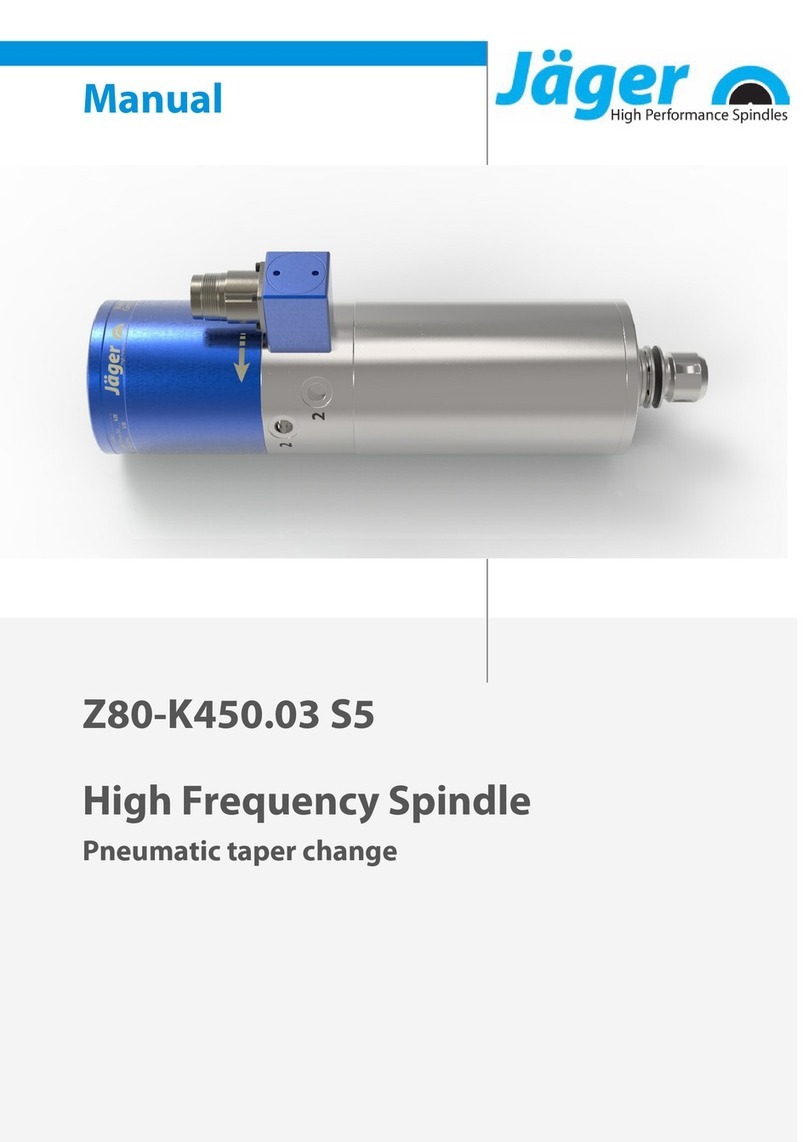
Jäger
Jäger Z80-K450.03 S5 manual
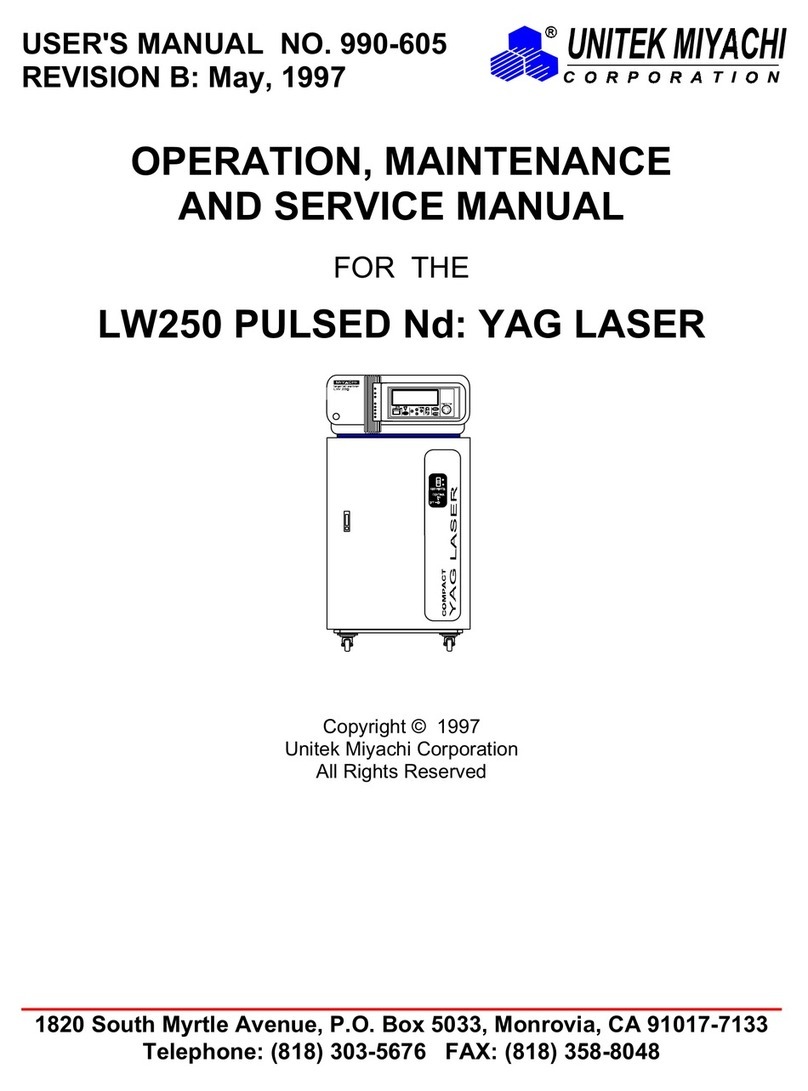
Unitek Miyachi
Unitek Miyachi LW250 Operation, maintenance and service manual
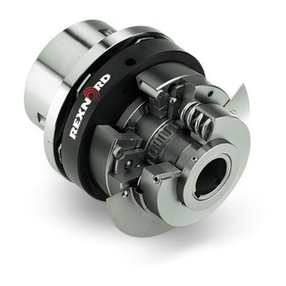
Rexnord
Rexnord AUTOGARD 400 Series Installation and maintenance instructions
